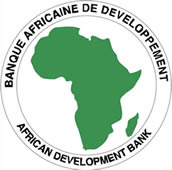Over the last decade, Ghana's real GDP has grown steadily at 4 per cent per annum on average. Sectoral growth rates in agriculture, industry and services have also remained reasonably positive. However, the macro-economic performance has not facilitated the needed structural transformation of the economy ; consequently, the economy continues to depend on primary commodity exports. At about 36 per cent of GDP, the contribution of agriculture has changed little since 1961 when it reached 35 per cent. Primary commodities account for 61 . 2 per cent of exports on average compared to II per cent for manufactured goods (1997-2001). Ghana's external debt grew from 41 .4 per cent of GDP to 132.2 per cent over the period 1983-2000, revealing significant levels of dependence on external financial flows.
The lack of structural transformation of the Ghanaian economy has constrained the development of new and better employment opportunities and a fuller utilization of the labour force. The majority of employment opportunities continue to consist of low-income agricultural and informal activities. Formal public and private sector jobs have declined . Persistent unemployment, underemployment and growth of precarious forms of employment remain central features of the economy.




































